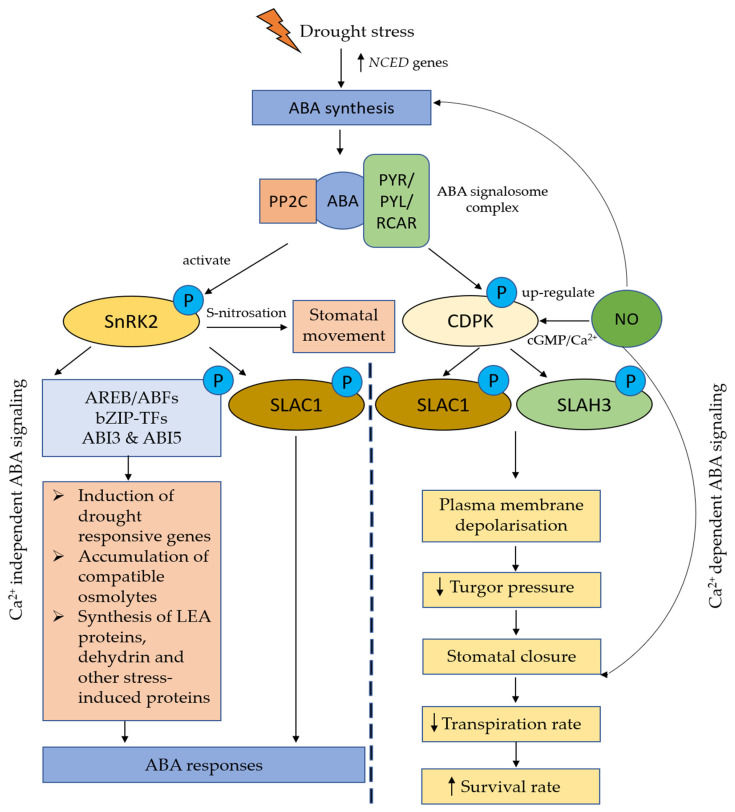Figure 4.
Schematic diagram showing crosstalk between abscisic acid (ABA) and nitric oxide (NO) under drought stress. Drought stress activates the regulation of 9-cis-epoxycarotenoid dioxygenase (NCED) gene to enhance biosynthesis of ABA at leaf vascular parenchyma cells, which are the primary sites for ABA biosynthesis. ABA molecule binds to the pyrabactin resistance1/PYR1-like/regulatory components of ABA (PYR/PYL/RCAR) receptors and protein phosphatase 2C (PPC2) to form ABA signalosome complexes. These ABA signalosome complexes phosphorylate either (I) sucrose nonfermenting 1 (SNF1)-related protein kinase 2 (SnRK2) in Ca2+ independent ABA signaling pathway or (II) calcium-dependent protein kinase (CDPK) in Ca2+ dependent ABA signaling. In Ca2+ independent ABA signaling pathway, SnRK2 proteins phosphorylated AREB/ABF, b-ZIP, ABI3, and ABI5 transcription factors to induce expression of drought-responsive genes, accumulation of compatible osmolytes, as well as synthesis of LEA proteins, dehydrin, and other stress-induced proteins or ion channels (e.g., SLAC1), and subsequently trigger ABA responses. In Ca2+ dependent ABA signaling pathway, CDPKs are activated by NO. The increase of Ca2+ and phosphorylated ion channels [SLAC1 and S-type anion channel 3 (SLAH3)] trigger a cascade of ABA responses. These include plasma membrane depolarization, decrease of turgor pressure, stomatal closure, and reduction of transpiration rate.

